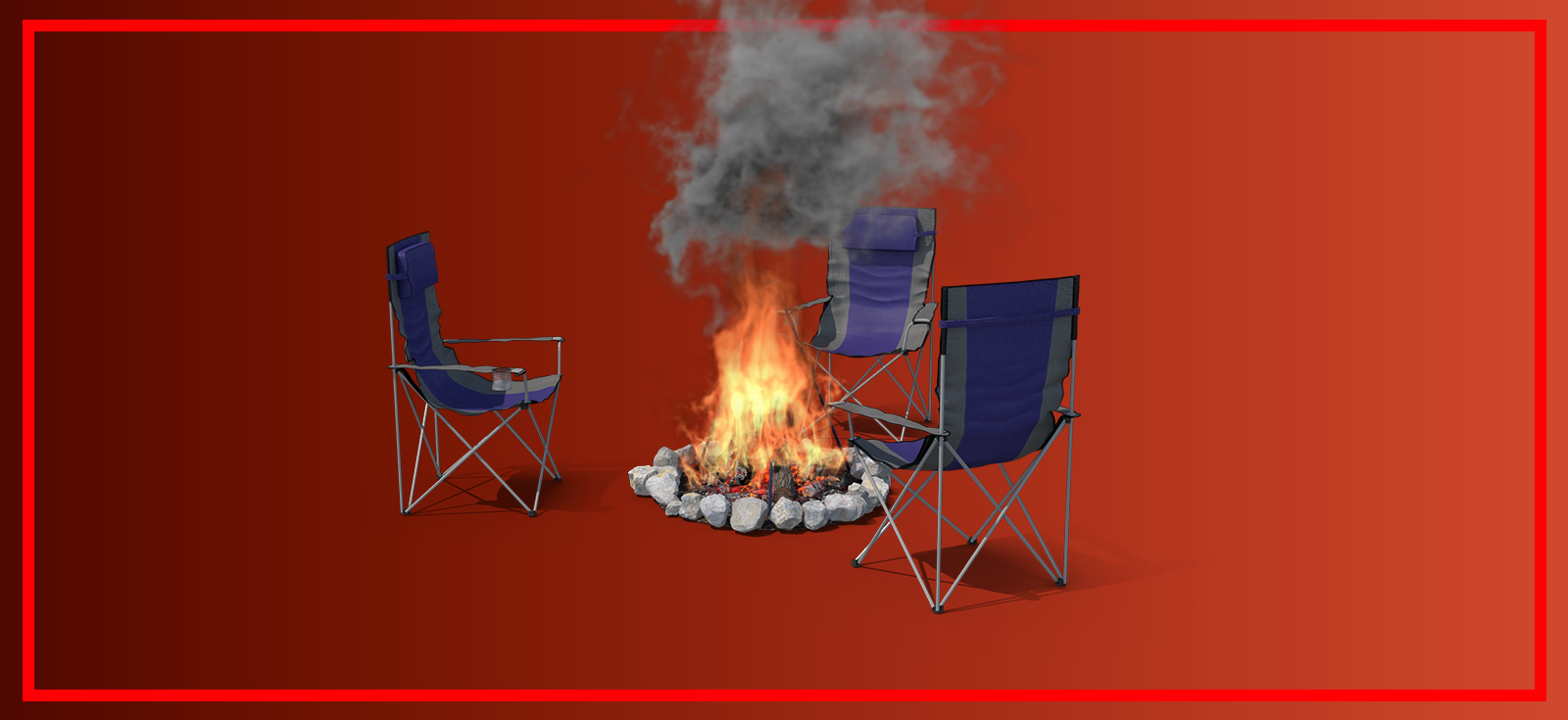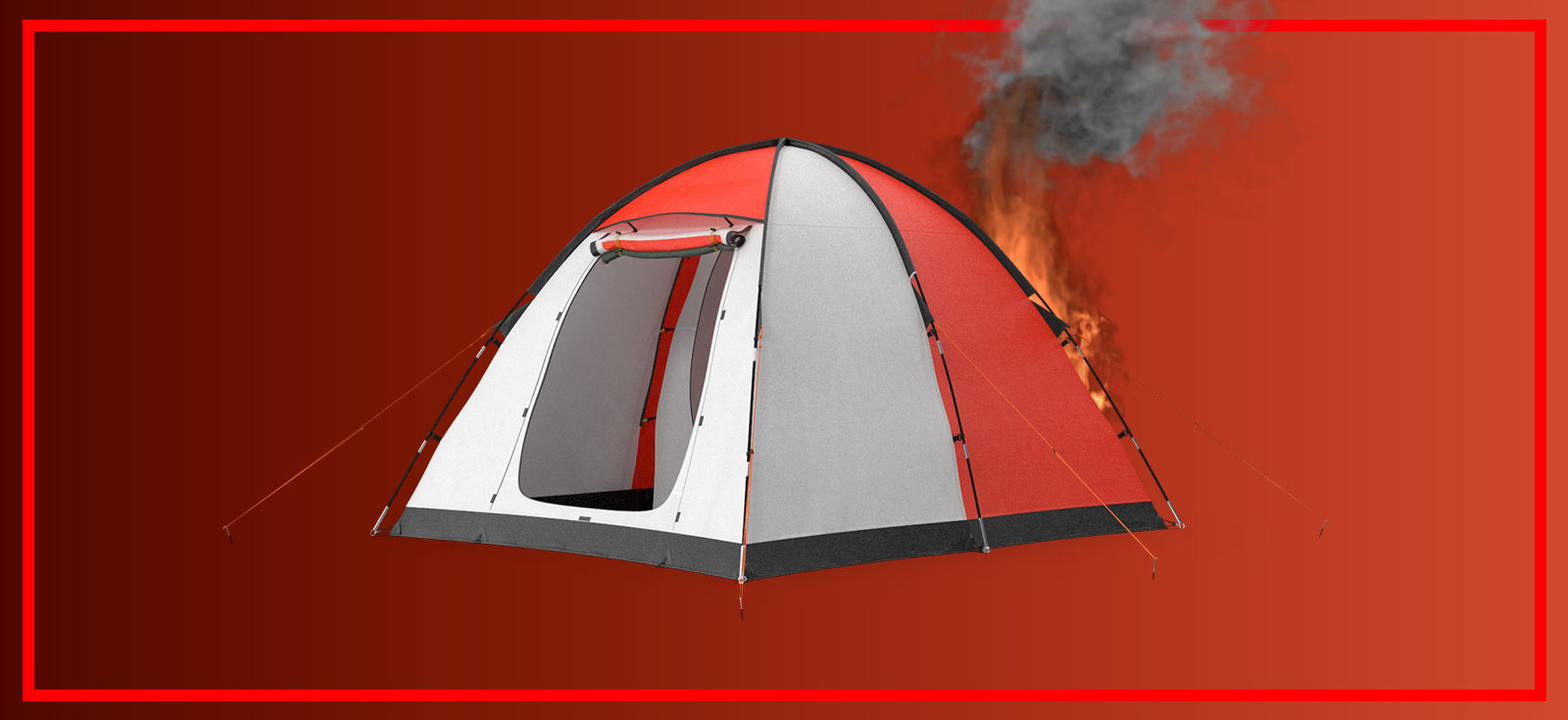Glastonbury organisers have added disposable vapes to the list of items banned from the festival site this week – not only because they are aiming to reduce waste at Worthy Farm,but also because the lithium batteries they contain are a fire hazard.
The new Glastonbury rule has prompted us to take a wider look at camping fire safety, not only for Glasto fans, but for attendees at all summer festivals and holiday campers.
Firstly, let’s start with vapes and the hazards they present.

The lithium batteries with which they, along with e-scooter and e-bikes, are powered can overheat and explode. Operators of waste recycling sites and bin stores have reported blazes started by the objects, which also give off noxious fumes – both something the Glastonbury team want to avoid.
In fact, a recent e-scooter lithium battery explosion in London saw 1,000C flames melting part of the vehicle within seconds. And its owner had a ‘lucky escape’ – only spending eight hours in hospital after inhaling toxic fumes while trying to battle the inferno with a fire blanket.
Simon Abley, CEO of Obsequio Group, of which CDS is part, said: “The rise in smoking e-cigarettes means we are seeing some pretty horrific fires breaking out. Although the motivation behind the decision to plan disposable vapes at Glastonbury was largely to prevent rubbish building up in landfill, it serves as an opportunity to remind people about the physical as well as environmental hazards of such items.”
From the fire dangers of new tech, we’ll now turn to hazards posed by an intermediate invention – the portable or disposable barbecue.

As well as the obvious fire risk, barbecues can be killers thanks to the carbon monoxide fumes they give off – even when no longer flaming.
“Using or storing them in a tent, even when the embers are dying down, can rapidly lead to carbon monoxide poisoning which can kill within minutes,” added Simon.
Carbon monoxide can’t be smelled or tasted and signs of poisoning include sudden flu-likesymptoms, headaches, nausea and vomiting, dizziness, drowsiness or weakness. Sadly, some people can be overcome by fumes without even being aware of the dire consequences.

And of course, as recent wildfires around the world and the UK have brought home to us, naked flames can set off a terrifying trail of destruction.
The traditional campfire – romantic and community focused as it is – is something whichrequires special care. In heatwave conditions, when the surrounding grass and other flora are tinder dry, the simple advice is – don’t start one. They can easily and quickly get out of control. They are banned on some campsites as a matter of course.

But if it there is no heatwave, no blanket ban and there are no tinder dry surroundings then it may be safe to use a fire pit or dig your own, with various provisos and a lot of planning. For starters, you need to site it on level ground at least 15 feet from anything flammable – such as tents, trees and shrubs.
Have a bucket of water nearby to catch any sparks and to damp down the embers at the end.
The Scouts offer detailed tips on how to create a campfire here: https://www.scouts.org.uk/activities/creating-the-perfect-campfire/
Now, enough of the scary stuff – enjoy your summer, but safely!
Find out more about our fire safety service here: https://cdsys.co.uk/services/


















